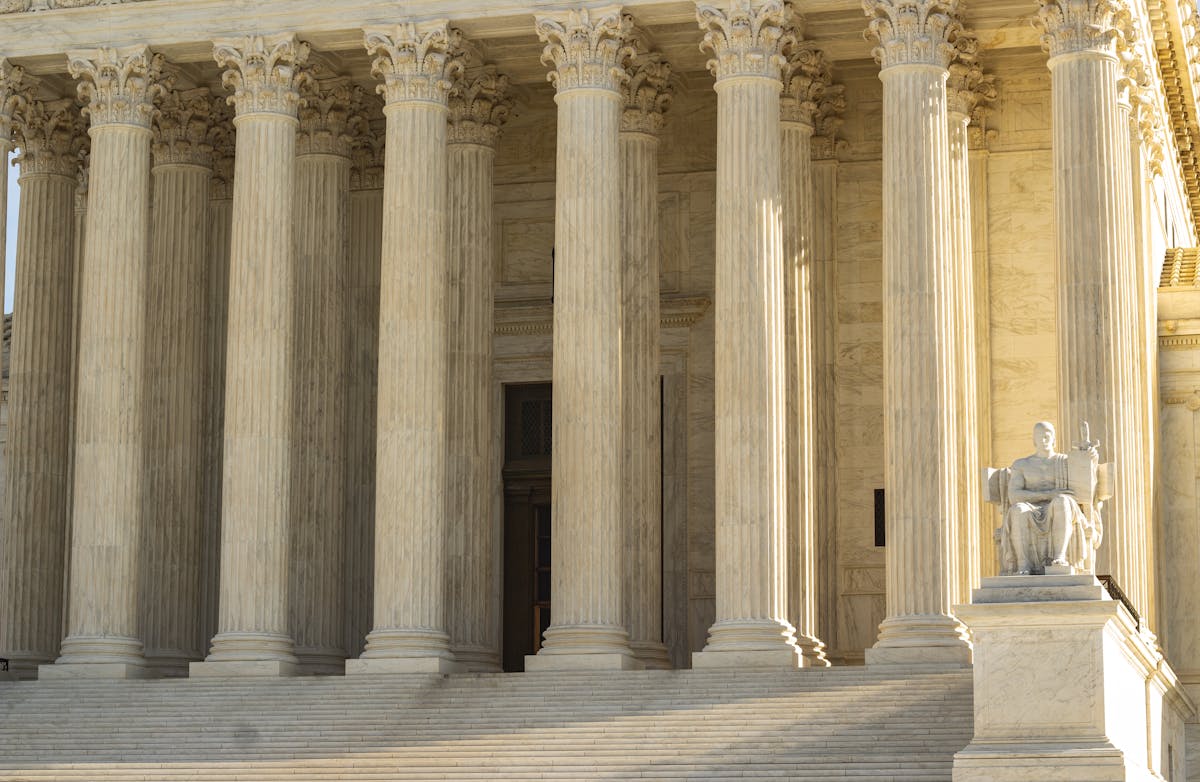Missouri Supreme Court Rules on Discrimination
The recent ruling by the Missouri Supreme Court has broadened the scope of the Missouri Human Rights Act (MHRA), by emphasizing the concept of ‘protected class’ and the perceived instances of discrimination. This judgment serves as a significant step in augmenting employee rights and mandating employers to adopt compliant policies. As we assess the potential implications of this pivotal ruling, it is essential to explore the full impact on the workplace environment, particularly for marginalized groups, and its potential ripple effects on the future of anti-discrimination laws.
The Case Background
The genesis of the case at hand can be traced back to an incident that transpired in a local Missouri company. The case revolved around the discrimination definitions prevalent in the legal terminology of the state. The plaintiff, an employee, alleged that the company subjected them to unlawful discriminatory practices based on their race and gender.
A precise analysis of the case reveals a critical examination of the legal terminology associated with discrimination. The Missouri Supreme Court was tasked with interpreting the definition of “discrimination” under the Missouri Human Rights Act (MHRA). The plaintiff alleged that the company’s actions were not in line with the guidelines set by this act, consequently infringing upon their rights.
The case also demanded an objective probe into the company’s policies and practices. The court had to ascertain if these policies were inherently discriminatory or if they merely resulted in discriminatory outcomes. The court’s analytical approach aimed at ensuring that the legal terminology was applied consistently and objectively, thereby safeguarding the rights of the individuals involved. The case’s background consequently lays the foundation for a broader discussion on the legal nuances of discrimination in Missouri.
Key Parties Involved
The identification and analysis of the key parties involved in the Missouri Supreme Court’s ruling on discrimination is essential for understanding the dynamics and implications of the case. These parties, their roles, and their influences will shed light on the depth and breadth of the court’s decision. By scrutinizing their involvement, we can better comprehend the legal and social context within which this significant ruling was made.
Identifying the Key Players
Often at the center of such landmark rulings, there are key players whose roles considerably shape the outcome. In the significant case of Missouri Supreme Court ruling on discrimination, the key players can be categorized into three broad groups: the plaintiff, the defendant, and the legal advocates.
The plaintiff, an individual or group who brings the case to court, is often the victim of an alleged discrimination. They play a significant part in challenging the status quo and seeking legal redress. The defendant, on the other hand, is the party accused of perpetrating the discrimination. They are essential in the legal process as their defense provides the court with an alternative perspective and allows for a fair trial.
Legal advocates, comprising of both attorneys and non-attorney advocates, are crucial in shaping the legal arguments and strategies. They provide the necessary legal expertise and guidance to both the plaintiff and the defendant. These advocates are instrumental in presenting the case facts, legal precedents, and arguments to the court, thereby playing a significant role in influencing the court’s decision. Identifying these key players is essential in understanding the dynamics of the legal process.
Roles and Influences
Understanding the dynamics of the legal process necessitates a closer look at the prominent roles and influences of the key parties involved. The Missouri Supreme Court, as an interpreter and enforcer of legal frameworks, holds an important role in addressing discrimination issues. Their legal determinations shape not only the law but the broader societal understanding of discrimination.
The plaintiffs, who brought the discrimination cases forward, play a vital role as initiators of these legal processes. Their experiences and willingness to challenge discriminatory practices influence the legal system, contributing to changes in social dynamics.
The defendants, often organizations or individuals accused of discriminatory practices, also hold an important role. Their reactions to accusations, whether that involves changes in policy or resistance to change, affect the landscape of discrimination law, and, by extension, social dynamics.
The lawyers on both sides shape the legal battle considerably. Their interpretation and application of legal frameworks, their strategic choices, and their persuasive abilities fundamentally influence the case outcomes.
Prior Legal Precedents
Historically, Missouri courts have consistently relied on a series of established legal precedents in cases of discrimination. These precedents, steeped in legal definitions and case histories, have provided a guiding framework for the courts to determine the legality and severity of discrimination cases.
A close analysis of these precedent cases reveals a distinct pattern. The courts have consistently upheld the principle of equal treatment under the law, as defined in the Civil Rights Act of 1964 and the Missouri Human Rights Act. This legal definition of discrimination states that it is unlawful to discriminate against any individual on the basis of race, color, religion, national origin, sex, ancestry, age, or disability.
In the context of employment discrimination, the Missouri courts have often referred to the landmark case of McDonnell Douglas Corp. v. Green. This 1973 U.S. Supreme Court decision provided a legal framework for proving discrimination, which has been followed in subsequent Missouri cases.
Furthermore, the Missouri courts have also frequently referenced the legal precedent established in the case of Daugherty v. City of Maryland Heights, which set the standard for proving hostile work environment harassment in the state. These legal precedents have greatly shaped the course of discrimination rulings in Missouri, providing a foundation for current and future cases.
The Court’s Decision
In a pivotal ruling, the Missouri Supreme Court rendered a decision that further clarified the state’s stance on discrimination. The court, in its remarkable understanding and legal interpretations, delineated a more extensive definition of discriminatory practices, thereby adding depth to the existing laws.
The ruling expounded on the use of ‘protected class’ as a determinant of discriminatory actions. The court held that discrimination based not only on the victim’s membership in a particular class but also on the perpetrator’s perception of their class, is unlawful. This expansion of the definition underscores the court’s commitment to combating discrimination in all its forms.
The case implications of the ruling are significant. In clarifying the state’s stance on discrimination, the court has reinforced the rights of individuals against unfair treatment and broadened the scope for potential victims of discrimination to seek redress. The ruling has also provided a clear guideline for lower courts, setting a precedent that is likely to shape future legal interpretations and rulings on similar cases.
Implications for Employers
Shifting our focus to the corporate domain, the recent Missouri Supreme Court ruling carries profound implications for employers. It necessitates a careful reevaluation of workplace policies to guarantee compliance with the new legal framework. The ruling underscores the need for businesses to explicitly address discrimination and foster an inclusive environment.
The court’s decision highlights the importance of diversity training in maintaining a discrimination-free workplace. Employers now face a heightened responsibility to provide thorough training that addresses all forms of discrimination. Such programs should not only focus on educating employees about non-discriminatory behavior but also empower them to identify and report any instances of discrimination.
Moreover, the ruling mandates employers to revise their workplace policies to explicitly prohibit discriminatory practices. Policies should clearly define what constitutes discrimination and the consequences thereof. They should also establish robust mechanisms for reporting and investigating complaints. Employers failing to comply with these requirements risk legal repercussions, including hefty penalties and damage to their reputation.
Impact on Employees
While the implications of the Missouri Supreme Court ruling for employers are significant, its impact on employees is equally profound. The decision strengthens employee rights, ensuring a more equitable environment in the workplace.
Firstly, the ruling fortifies the legal protections for employees who face discrimination. It solidifies the rights of employees to seek redress from not only their direct employers but also from individuals who have exercised discriminatory practices. Consequently, this empowers employees to assert their rights under law without fear of reprisals.
Secondly, the ruling promotes workplace equality by making discriminatory practices an explicit violation of the law, thereby deterring such behavior. This not only benefits those who have experienced discrimination but also fosters a more inclusive workplace culture.
Broader Context in Missouri
To fully comprehend the recent decision by the Missouri Supreme Court, one must consider its broader context within the state. This encompasses an examination of historical patterns of discrimination in Missouri, current legislative measures aimed at addressing these issues, and the particular impact on minority groups. Such an analysis can provide a thorough understanding of the ruling’s implications and its potential to reshape the state’s socio-political landscape.
Historical Discrimination in Missouri
The historical landscape of discrimination in Missouri provides a broader context for understanding the recent ruling of the state’s Supreme Court. This context is rooted in systemic inequality, which has persisted since Missouri’s inception as a slave state in 1821. The state’s early history was marred by vehement racial tension, particularly during the Civil War and the subsequent Reconstruction period.
Despite the advances of the civil rights movement in the 1960s, Missouri has struggled to fully address and rectify its legacy of discrimination. An analysis of the state’s discriminatory practices reveals a pattern of systemic inequality in various sectors including education, housing, and employment. This systemic discrimination has disproportionately affected Black Missourians, perpetuating a cycle of poverty and marginalization.
The legacy of segregation in Missouri is particularly evident in its metropolitan areas, where racial disparities continue to influence socio-economic outcomes. The impact of historical discrimination is also visible in the state’s criminal justice system, which has been criticized for racial disparities in policing and sentencing.
Understanding Missouri’s history of discrimination is vital for interpreting the Supreme Court’s recent ruling. This context illuminates the depth of the state’s struggle with inequality, providing a backdrop against which the significance and potential impact of the ruling can be fully appreciated.
Current Legislative Measures
Legislative efforts in Missouri have recently been geared towards addressing the systemic discrimination embedded in the state’s fabric. The state’s lawmakers have been active in introducing and passing legislation aimed at strengthening current protections for marginalized groups.
These legislative changes primarily involve modifications to the Missouri Human Rights Act (MHRA). The amendments focus on expanding the scope of the Act, incorporating more thorough definitions of discrimination to include subtle and indirect forms, and increasing penalties for violations. Also, efforts are being made to guarantee a more efficient implementation process, reducing the backlog of cases and providing quicker resolution for complainants.
Furthermore, Missouri legislators are pushing for increased funding for educational and awareness programs. The goal is to create a culture of inclusivity and respect, starting from schools and extending to workplaces. These programs are designed to not only educate citizens about their rights and responsibilities but also to provide resources for victims of discrimination.
Impact on Minority Groups
While recent changes to the Missouri Human Rights Act and the introduction of educational programs demonstrate strides in combating discrimination, it is crucial to examine the tangible effects on marginalized communities within the state.
The enforcement of minority rights is a paramount concern, as systemic inequality has perpetuated disparities amongst racial, ethnic, and socio-economic groups. The recent rulings by the Missouri Supreme Court have been hailed by some as game-changing, but the actual impact on minority groups requires a more nuanced analysis.
One notable effect has been an increased discourse around discrimination, helping to raise awareness and foster understanding. However, while this is positive, it does not necessarily translate into immediate material improvements for marginalized individuals.
Moreover, the effectiveness of the new laws and programs is contingent on their proper implementation within institutions that have historically perpetuated systemic inequalities. It is vital to monitor these institutions’ compliance to guarantee that these changes don’t merely exist on paper, but effectively address the challenges faced by minority communities.

Future of Anti-Discrimination Laws
In light of the recent ruling by the Missouri Supreme Court, a shift appears to be on the horizon for anti-discrimination laws. This decision has presented both future implications and legislative challenges that lawmakers and citizens alike must grapple with.
- Future Implications: The ruling sets a precedent for future cases, potentially encouraging more individuals to come forward with their experiences of discrimination. This could lead to an increased societal understanding of the pervasive issue, influencing further legislative action.
- Legislative Challenges: The decision may also provoke legislative challenges. Lawmakers may face the intimidating task of redefining or modifying existing laws to reflect this new interpretation of discrimination. This process could be marked by lengthy debates and potential resistance.
- Public Response: The response from the public will be another vital factor to monitor. Will this ruling lead to widespread societal change, or will it be met with backlash? The public’s reaction could considerably influence the trajectory of anti-discrimination laws.
As we move forward, the future of anti-discrimination laws will certainly be a topic of great interest and intense scrutiny. The Missouri Supreme Court’s ruling has undeniably opened the door for further discussion and transformation.
Frequently Asked Questions
What Is the Process to Appeal a Missouri Supreme Court Ruling?
To appeal a Missouri Supreme Court ruling, one must adhere to established appeal procedures, which include filing a notice of appeal and meeting specific legal standards such as demonstrating error in the trial court’s decision.
How Can Non-Missouri Residents Support Anti-Discrimination Efforts in the State?
Non-Missouri residents can support anti-discrimination efforts in the state through participation in advocacy campaigns, donation to local organizations, and implementing effective fundraising strategies to bolster resources for change.
Can This Decision Be Overturned by Federal Law or the US Supreme Court?
Yes, federal authority can overturn state decisions if they contradict federal law, and the U.S. Supreme Court can also overrule based on constitutional grounds, setting a new legal precedent. This process, however, can be lengthy and complex.
Does This Ruling Impact Other Forms of Discrimination Not Covered in This Case?
While the ruling specifically addresses one instance, its broader implications could potentially influence the interpretation of other forms of intersectional discrimination, depending on the specific details and circumstances of those separate cases.
How Can Individuals Track Future Changes in Missouri’s Anti-Discrimination Laws?
To track future changes in anti-discrimination laws, individuals can monitor legislative updates, engage in local advocacy strategies, and subscribe to legal bulletins or news alerts from reputable law-centric information sources.






